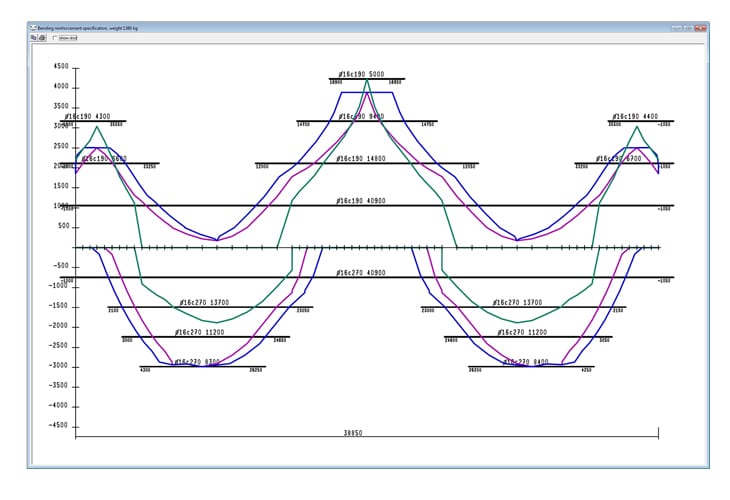
BRIGADE/Standard
Easy & Efficient Bridge Analysis and Design

Key Features of BRIGADE/Standard
Easy-to-use Modeling Environment
Easy-to-use environment for 3D modeling and analysis of bridge structures.
Parametric Modeling
User quickly can define and modify the geometry, loads, boundary conditions, mesh density etc.
Auto-meshing
Automatically creates the finite element model from the geometry defined by the user.
Predefined Loads
Predefined loads of all the types that are present on bridge structures.
Moving Loads
Market-leading technique for evaluation of the response of moving loads.
Prestressing
BRIGADE/Standard allows for the analyses of prestressing.
Load Combination
State-of-the-art load combination facility automatically taking into account.
Result Visualization
Wide range of post-processing features in order to enable efficient interpretation of results.
Reinforcement Design
Reinforcement in accordance with Eurocode can easily be calculated using the module ConcreteDesigner.
BRIGADE Customer Story

As a BRIGADE user for over 14 years, Max Fredriksson, Business Manager for the Bridge and Civil Structural engineering department at Inhouse Tech describes how BRIGADE is used at their company.
BRIGADE/Standard Features In Detail

BRIGADE/Standard offers an easy-to-use environment for 3D modeling and analysis of bridge structures. The intuitive interface is easy-to-learn for new users and yet highly productive for experienced users.

BRIGADE/Standard is based on a parametric modeling concept where the user can quickly define and modify the geometry, loads, boundary conditions, mesh density etc.

BRIGADE/Standard automatically creates the finite element model from the geometry defined by the user. The density of the mesh is easily controlled by the user.

BRIGADE/Standard includes predefined loads of all the types that are present on bridge strucktures, such as dead weight, surfacing, pre-stressing, shrinkage, moving traffic loads, braking forces, temperature, wind load, seismic load etc. These loads can easily be activated and tuned by the user.

BRIGADE/Standard includes a market-leading technique for evaluation of the response of moving loads. The technique is based on influence surfaces/lines and mesh-independent traffic lane alignments. Vehicles can consist of axles with fix or variable internal distances and in combination with moving surface loads. Multiple simultaneous vehicles in different lanes are handled automatically. Vehicles can be created manually or generated from a library of design code specific vehicles e.g. Eurocode, AAASHTO, British Standard and the Scandinavian road and railroad bridge codes.

BRIGADE/Standard allows for the analyses of prestressing. The alignments of longitudinal and transversal tendons are easily defined. Short-term losses (friction, wobble and anchorage) are calculated automatically. Long-term losses (shrinkage, creep and relaxation) can easily be defined based on the calculated concrete and cable stresses in quasi-static load combinations.

BRIGADE/Standard includes a state-of-the-art load combination facility automatically taking into account whether the loads provide an adverse or relieving effect on the structure. Load combinations can be created manually or generated from a library of design code specific combinations e.g. Eurocode, AAASHTO, British Standard and the Scandinavian road and railroad bridge codes.

BRIGADE/Standard offers a wide range of post-processing features in order to enable efficient interpretation of results:
- Contour plots (deformed or undeformed model)
- Diagram plots
- Vector plots
- Animation of results
- Visualization of most adverse live load positions
- Result report generators
- Export to MS Excel

The need for reinforcement in accordance with Eurocode can easily be calculated using the module ConcreteDesigner.





